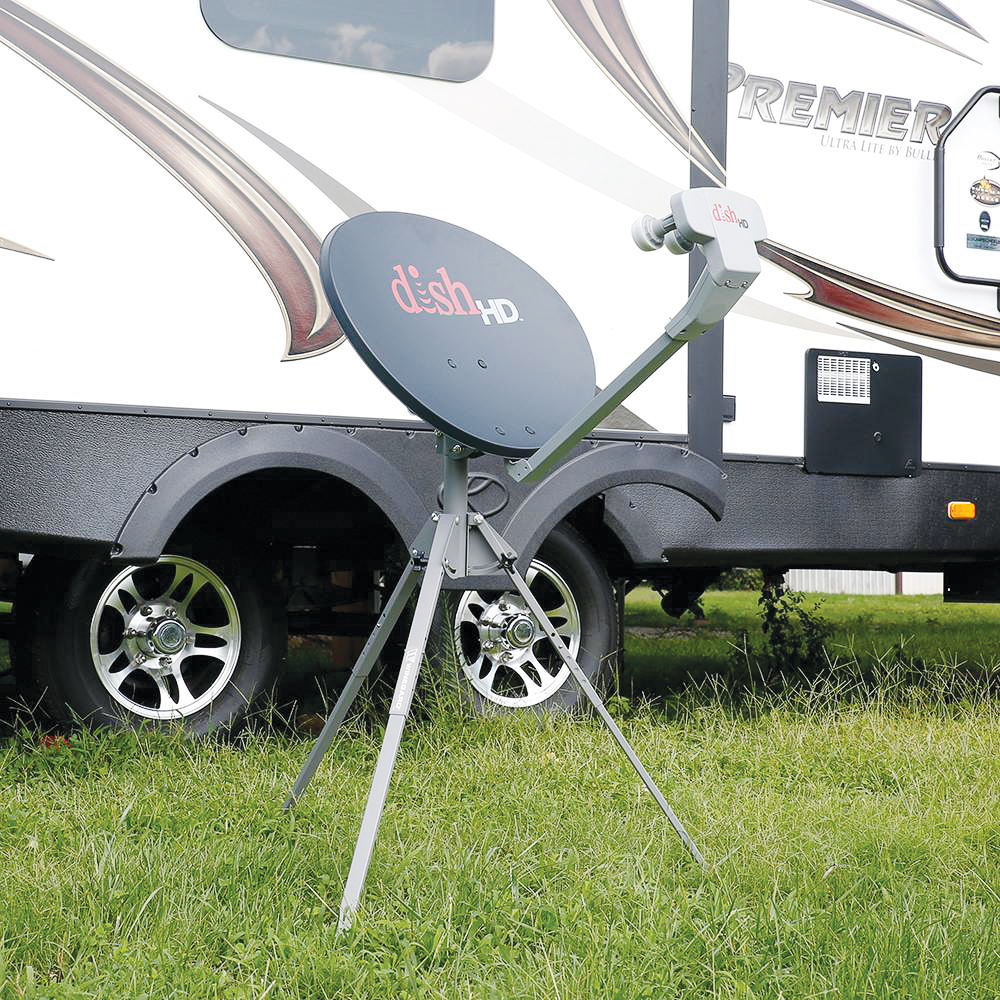Cable at campgrounds is handy, but if you’re off the grid or in remote areas, a satellite dish may be for you.
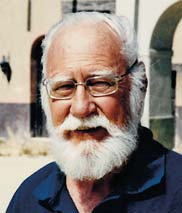 Have you ever camped in the mountains, or a desert only to find that TV reception is impossible because you are either too far away from any TV stations or the reception is blocked by the mountains?
Have you ever camped in the mountains, or a desert only to find that TV reception is impossible because you are either too far away from any TV stations or the reception is blocked by the mountains?
When you are on the road enjoying a vacation, many of us still want to watch the latest news, a special sporting event like the Olympics, or keep up with our favourite team. For many years, RVs had a simple antenna mounted so you could watch the local channels if they were not too distant from the campground. A simple antenna was installed by the dealer on the side of your RV that would fold up for travel and was easy to raise and point toward the nearest town. There was no cost for the programs in these days.
Today, many campgrounds have installed cable TV systems that allow us to view more channels from distant stations. We simply hook up a cable from our TV to a post beside our camping space and we can view stations beyond the hills and mountains. This service used to cost extra but as competition to attract campers has increased, many park owners now offer this service for free.
Most new RVs sold now have been equipped to receive reception from satellites that allows us to view programs from across the country. If you want to receive crystal clear reception, the wires are likely already installed in your roof to connect a dish type antenna to your entertainment system. All you have to do then is subscribe to a programming service from one of the many satellite providers.
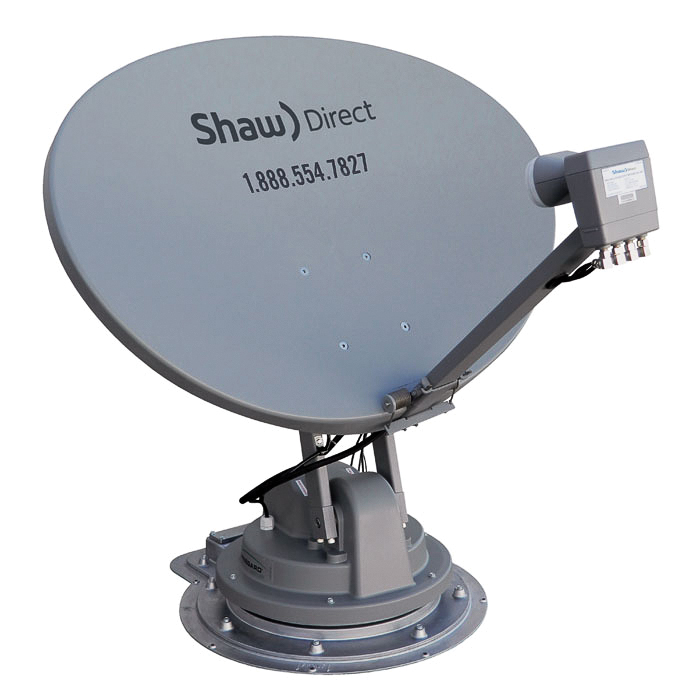 Satellite dishes for RVs are available with minimal features, or with all the bells and whistles. Dishes range from the lowest cost that you carry in a compartment and set up on the ground or picnic table and aim by hand, to roof mounted dishes that you rotate with a hand crank from inside the RV, to ultimate computer-controlled dishes.
Satellite dishes for RVs are available with minimal features, or with all the bells and whistles. Dishes range from the lowest cost that you carry in a compartment and set up on the ground or picnic table and aim by hand, to roof mounted dishes that you rotate with a hand crank from inside the RV, to ultimate computer-controlled dishes.
Your antenna must have an unobstructed view of the sky not blocked by trees or buildings. These satellites hover 22,300 miles above the equator in a synchronous orbit. In plain English, this means they rotate around the earth in the same direction the earth is turning. To the satellite antenna on our RV, the satellite appears to be stationary, sitting at the same point above the equator all the time.
The satellites are easy to locate with the dish antenna. You just turn the system on and start to rotate your dish towards the south, a beeping sound will be heard from the tv set. As you get closer to the correct position, the beeping becomes faster until you receive a steady tone when you are locked onto the satellite.
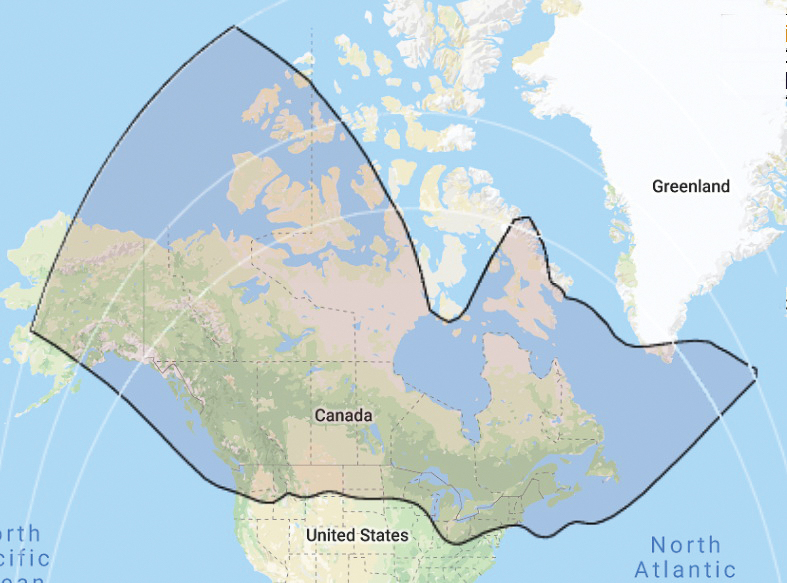
The Canadian satellite systems provide reception to all parts of Canada and a small portion of the northern U.S.A. Television networks use special channels to relay raw program feeds from distant locations back to the studios who are broadcasting the program. TV programs are sent up to one of the satellites parked in orbit above the earth which use a device called a transponder that relays the program back down to all viewers who have a dish type satellite receiver.
Many communities use the satellite signals to feed their local cable TV distribution system. When I hosted a nationally syndicated TV series a few years ago, each episode was sent to the satellite and distributed to 1,320 communities each week.
You can receive programs from the regular TV networks and distant stations by subscribing with a monthly fee. If you want to see the latest movies or sports events, they are available on pay-for-view.
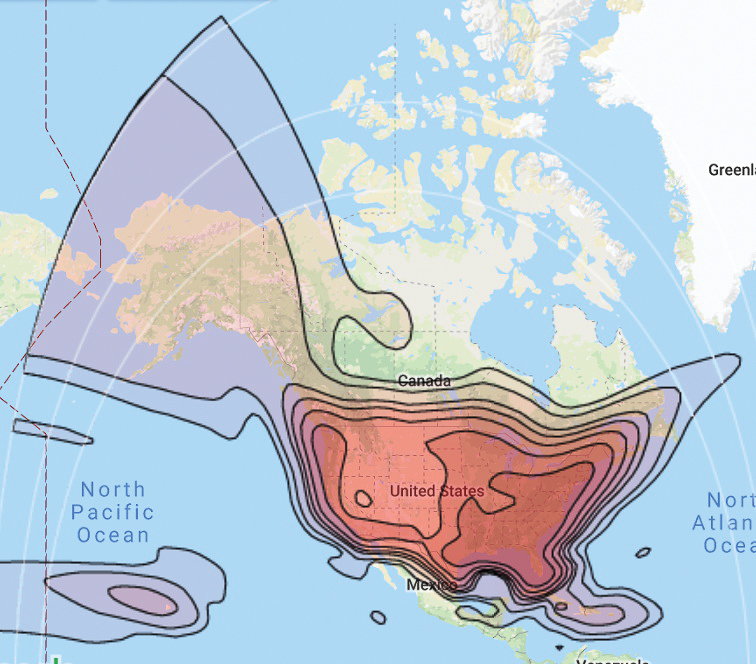
There are different satellite companies in the U.S.A. and Canada. Each one has purchased the copyright for the films and sports events that they transmit to their own country. As a Canadian you can subscribe to either BellTV or Shaw to obtain one of the programming packages while travelling in Canada.
Dish has a new Pay-As-You-Go plan that allows Canadians to access programming on a month by month basis while you are travelling in the U.S.A. If you want to watch certain pay-for-view programs your receiver needs to be connected by land phone line (not a cell phone) for authorization and billing purposes.
We used a KVH automatic dish on our motorhome for years, it would receive ExpressVu and DirecTV while we were in motion. It was a large dish inside a white radom that could track the satellite as we drove around the country. KVH decided to concentrate on the cruise and airline industry and parts and service became difficult to obtain for RV’ers.
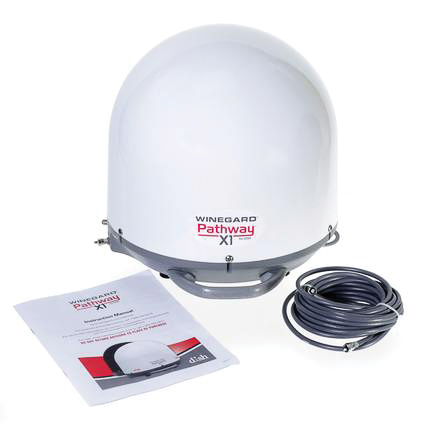 Currently, we are using a Winegard G3 antenna system on our coach that can be set to receive Bell TV in Canada, and Dish or Direct TV when we are in the U.S.A. The new Carryout G3®, DIRECTV®, is an auto-acquire satellite antenna, which is a perfect option for tailgaters, outdoor enthusiasts and RV’ers who are always on-the-go, but who want to stay connected to their favourite TV programming.
Currently, we are using a Winegard G3 antenna system on our coach that can be set to receive Bell TV in Canada, and Dish or Direct TV when we are in the U.S.A. The new Carryout G3®, DIRECTV®, is an auto-acquire satellite antenna, which is a perfect option for tailgaters, outdoor enthusiasts and RV’ers who are always on-the-go, but who want to stay connected to their favourite TV programming.
This new antenna offers stronger signal strength with a simple switching system on the power injector to allow you to switch easily between reception of DIRECTV or DISH when you are in the travelling in the U.S., along with BellTV in Canada (but not Shaw Direct as it uses a different form of transmission). Its shorter height gives the RV owner more clearance when around low-hanging objects such as tree branches. It automatically locks into the provider’s satellites for a reliable signal, so you can watch TV anytime, anywhere (as long as it can see the sky). The improved design houses a larger reflector, which increases signal strength up to 20 percent, it is flexible so RV’ers can choose to use it as a portable or a roof mounted antenna. We use one unit permanently mounted on the roof of the motorhome so that it is always ready for reception as soon as we park in a campground. We also have another portable one that we can use with a long cable when the sky is blocked from view by large trees
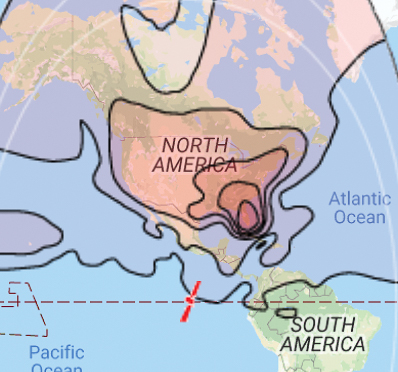
Your choice of programming and your travel destinations throughout the year will determine which of the systems is the best for your use. You will still need a standard UHF television receiving antenna on your RV to receive the local TV stations in the area you are visiting. It often makes more sense to use satellite reception on the road than it does at home.
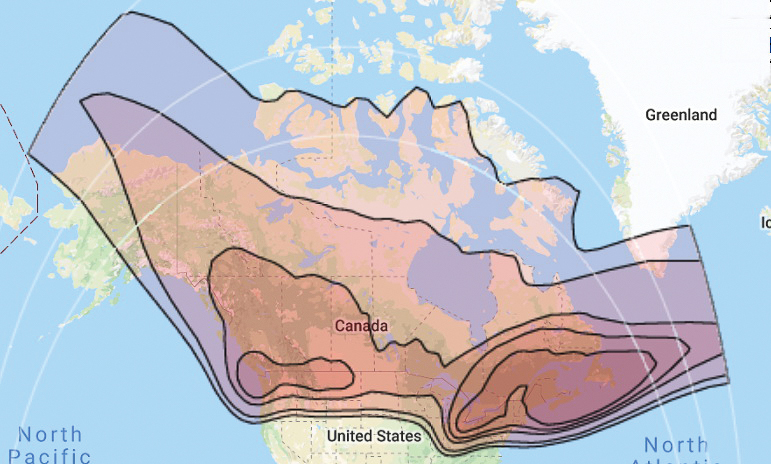
Is satellite TV reception for you? If your travels take you away from the big cities or into the remote areas of the country and you can’t live without your information and entertainment, a satellite receiver is the only way to guarantee reception wherever you go.
The biggest problem with satellite TV is the immense selection available. At any time, there can be up to 200 programs available, you can only watch one at a time!


















